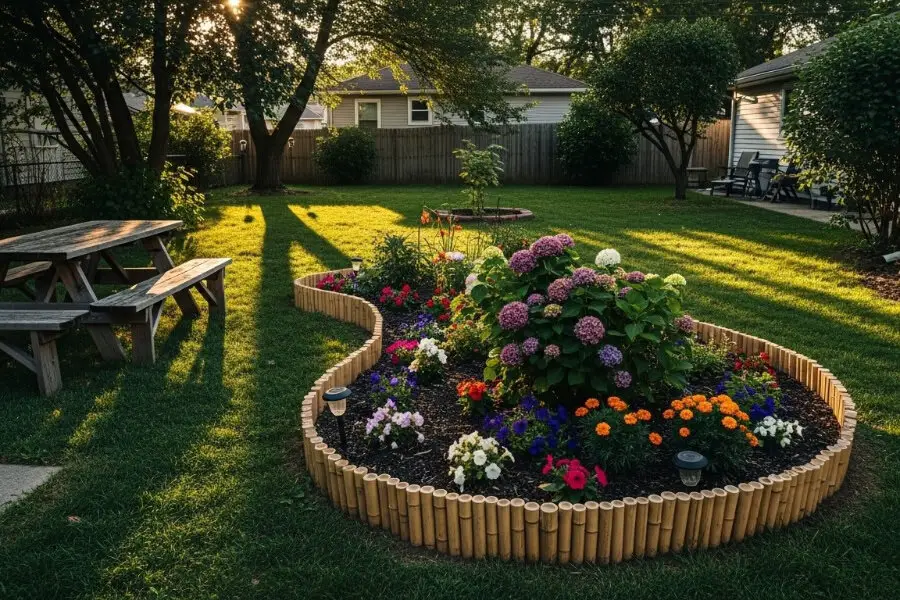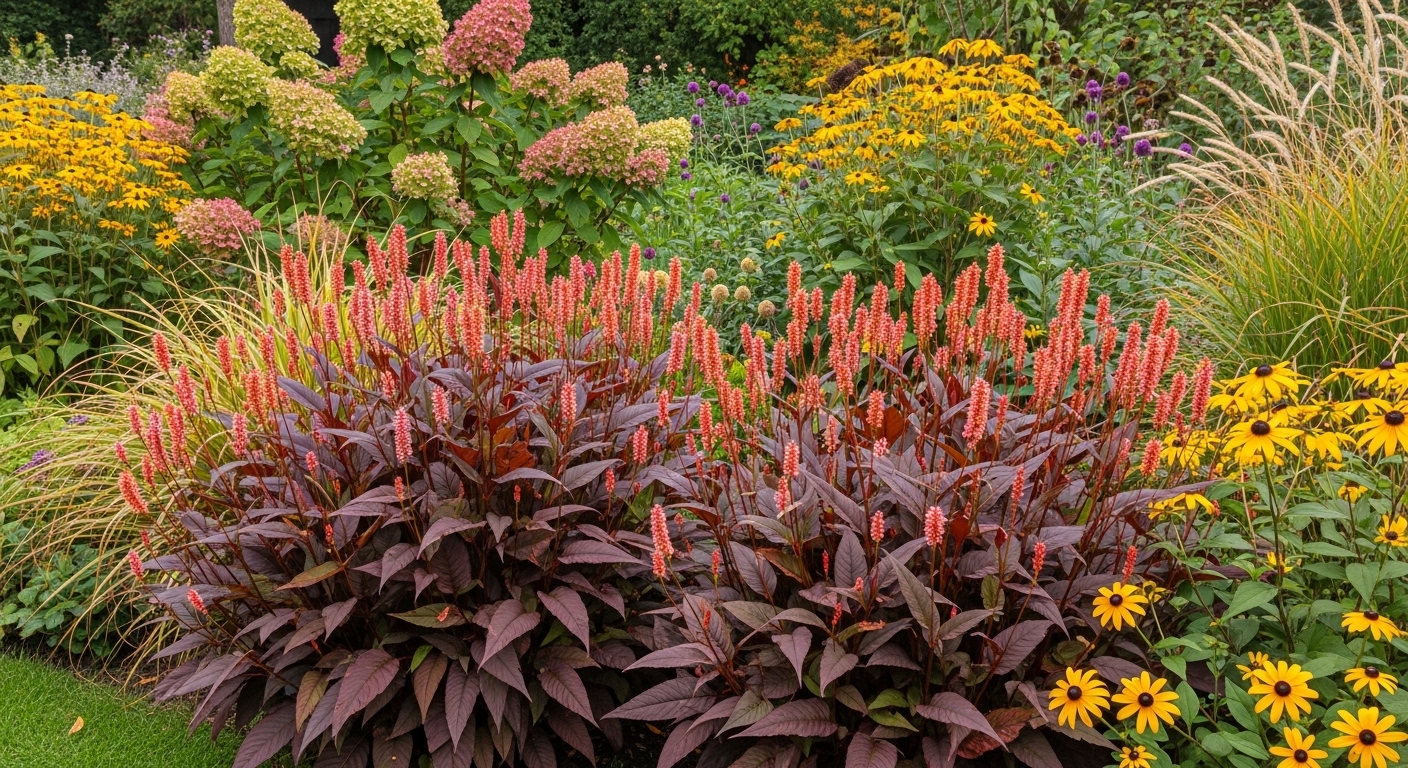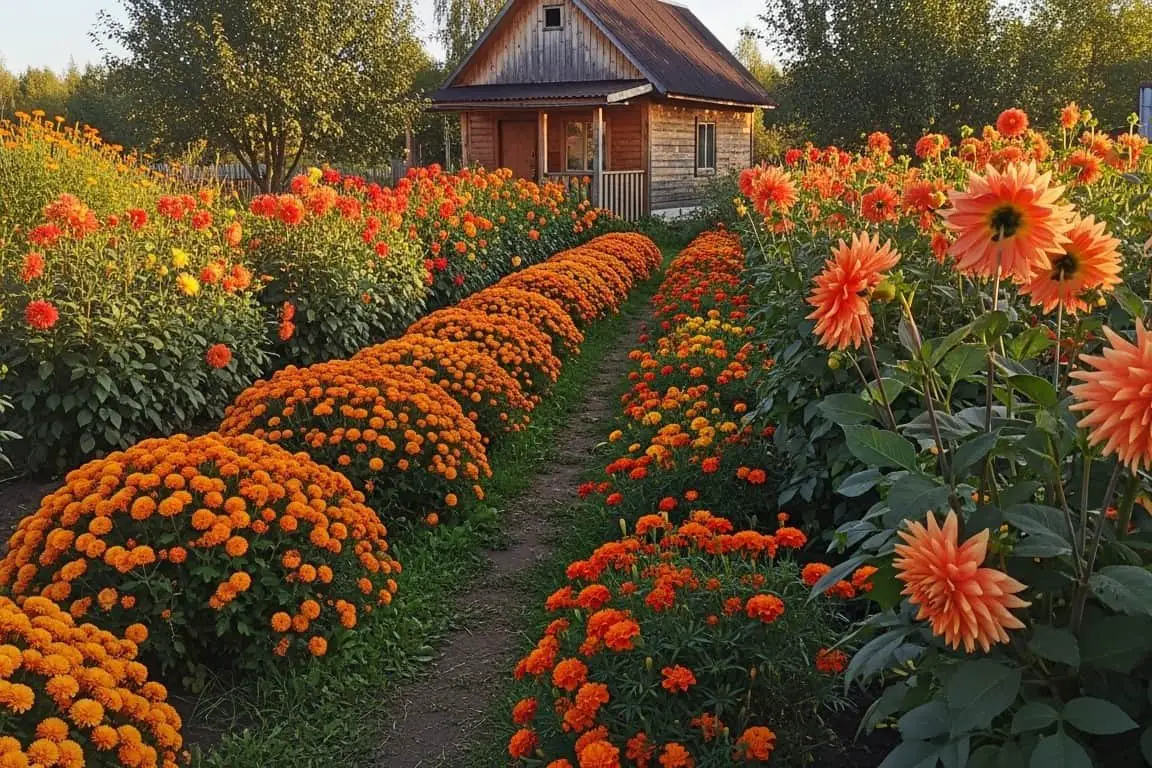Struggling with growing healthy dahlias? These bright, bold blooms need the right care to thrive. This guide shares quick and easy tips for planting dahlias, ensuring stunning flowers all season.
Get ready to grow like a pro!
Contents
Choose the Right Spot and Soil
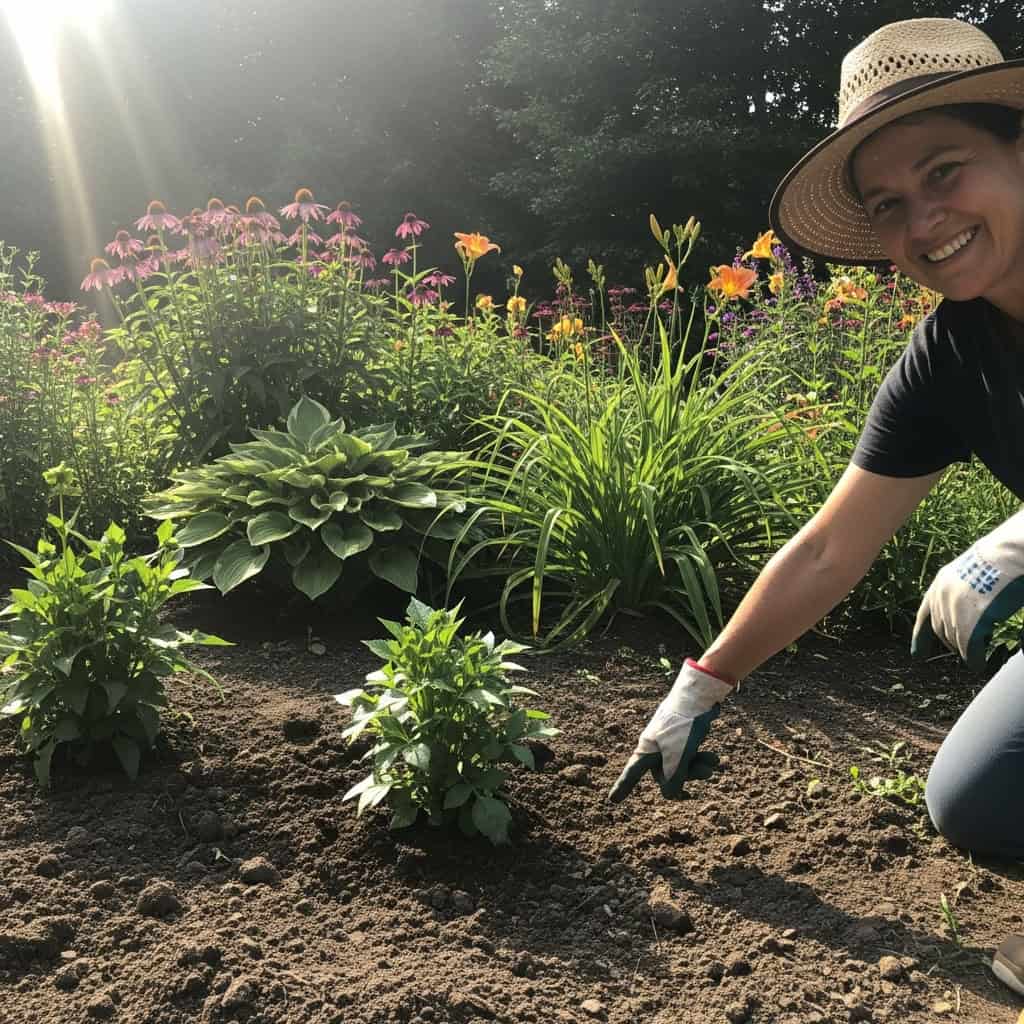
Pick a sunny spot with rich, loose soil. Add organic matter to boost growth and improve drainage.
Sunlight
Dahlias thrive in full sun and need at least 8 hours of sunlight daily. Without enough light, they grow tall with fewer blooms. Place them where the sun hits directly for most of the day.
Some gardeners use shade structures if intense heat becomes a problem. Mulching around dahlia plants helps cool the soil and keeps moisture locked in during hot days.
Drainage
Good drainage is crucial for growing dahlias. Waterlogged soil can rot dahlia tubers, especially in areas warmer than Zone 8 or during wet winters. Adding organic matter like peat moss improves drainage and keeps the root system healthy.
Plant them in a spot that stays slightly damp but never soggy. Avoid planting near trees where roots compete for water. A drip irrigation system works well to keep moisture around the roots while preventing wet foliage, reducing the risk of powdery mildew.
Water Wisely
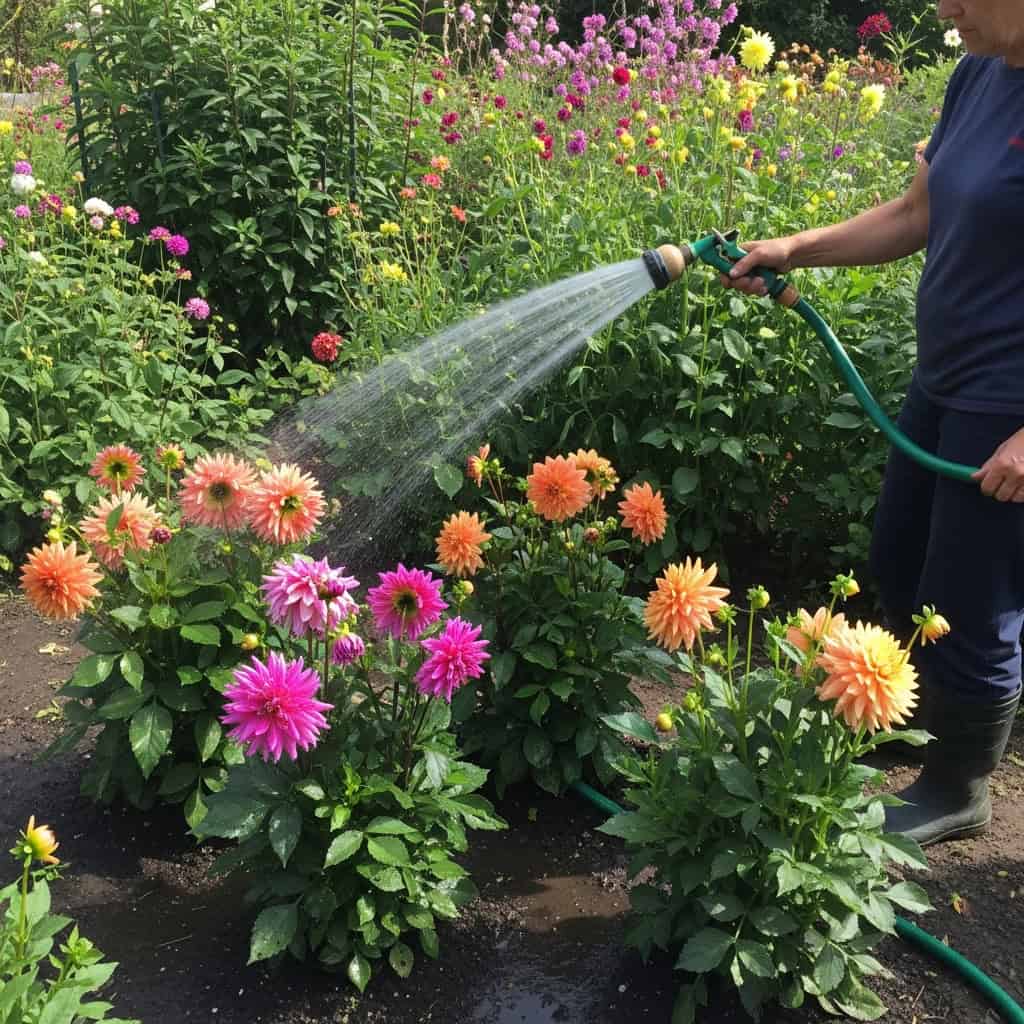
Dahlias need regular, deep watering to grow strong roots. Use a soaker hose for even moisture without overwatering.
Be patient
Growth takes time. Dahlia tubers need weeks to sprout at the base of the stem. Starting them indoors speeds up the growing season, especially in cooler areas like zone 6a.
Water only after sprouts appear. Too much moisture early can rot tubers. Use a soaker hose for steady watering once germinated, promoting strong root systems and healthy stalks.
Water consistently
Water newly planted dahlia tubers lightly. Too much water can cause rot. As the plants grow, increase watering when they reach 12 inches tall. Deep watering helps strong roots develop.
During flowering, dahlias need more moisture. Water at the base to avoid fungal diseases. Automatic irrigation systems can ensure even soil moisture but adjust them based on plant needs for better dahlia care.
Move to providing proper support early as your dahlias start growing taller!
Provide Support
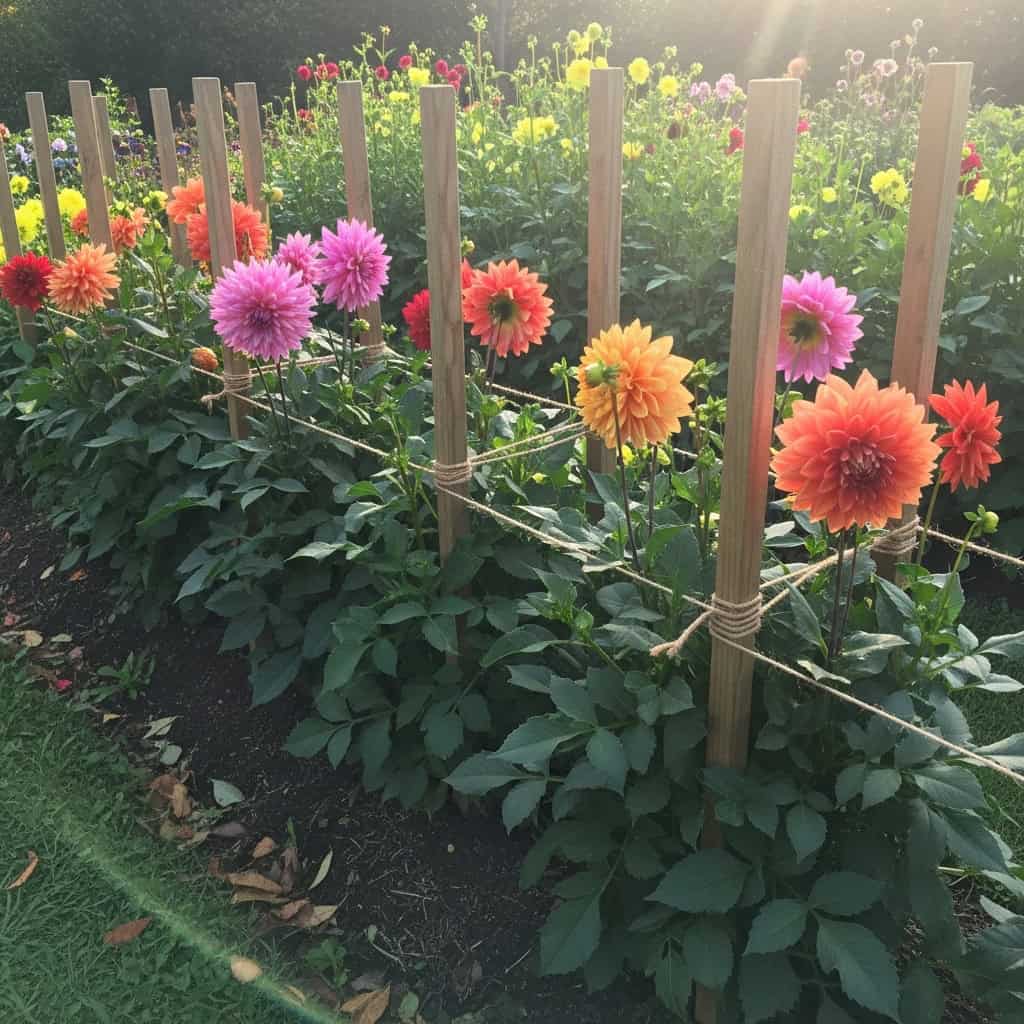
Dahlias grow tall and need help to stay upright. Use sturdy wooden stakes or cages early to avoid damage later.
Stake early
Place sturdy wooden stakes or bamboo canes next to dahlia tubers during planting. This gives the stems support as they grow. Use jute twine to tie them gently but firmly.
For stronger plants, angle supports outward like a “V” shape. It prevents drooping and adds stability. In gardens with multiple dahlias, place one strong stake between two plants and tie both midway for balance.
Tie as they grow
Use wooden stakes to support growing dahlias. Stake early, close to the dahlia tubers, so roots aren’t disturbed later. As stems grow taller, loosely tie them with twine for stability.
Add more ties as needed. Taller varieties need extra care; use diagonal stakes or netting at the base for stronger support. This keeps plants upright and prevents flopping.
Feed for Flowers

Use organic fertilizer to boost flower production. Choose one with phosphorus for stronger blooms.
Fertilize early
Apply fertilizer within the first month or two after planting dahlias. Use a balanced option like Osmocote Fertilizer (14-14-14) at this stage. This step helps dahlia tubers grow strong stems and healthy leaves early on.
A higher nitrogen mix works well during planting but should not be used later.
Organic fertilizer with phosphorus boosts budding and flower production. Bone meal or soil amendments rich in organic matter can also improve soil nutrition during this time. Early feeding ensures vibrant blooms all season, especially for varieties like Swan Island Dahlias thriving in Zone 6a gardens.
Consider nutrients
Focus on balanced fertilizers like 10-10-10 for steady growth. High phosphorus boosts flowering, but too much can harm the soil. Levels above 750 ppm are excessive and should be avoided.
Organic matter, like compost or bone meal, enriches the soil naturally. Avoid adding too much nitrogen; it encourages taller stems but reduces bloom quality. Regular soil tests help monitor nutrient levels and prevent overfeeding.
Pinch for More Blooms
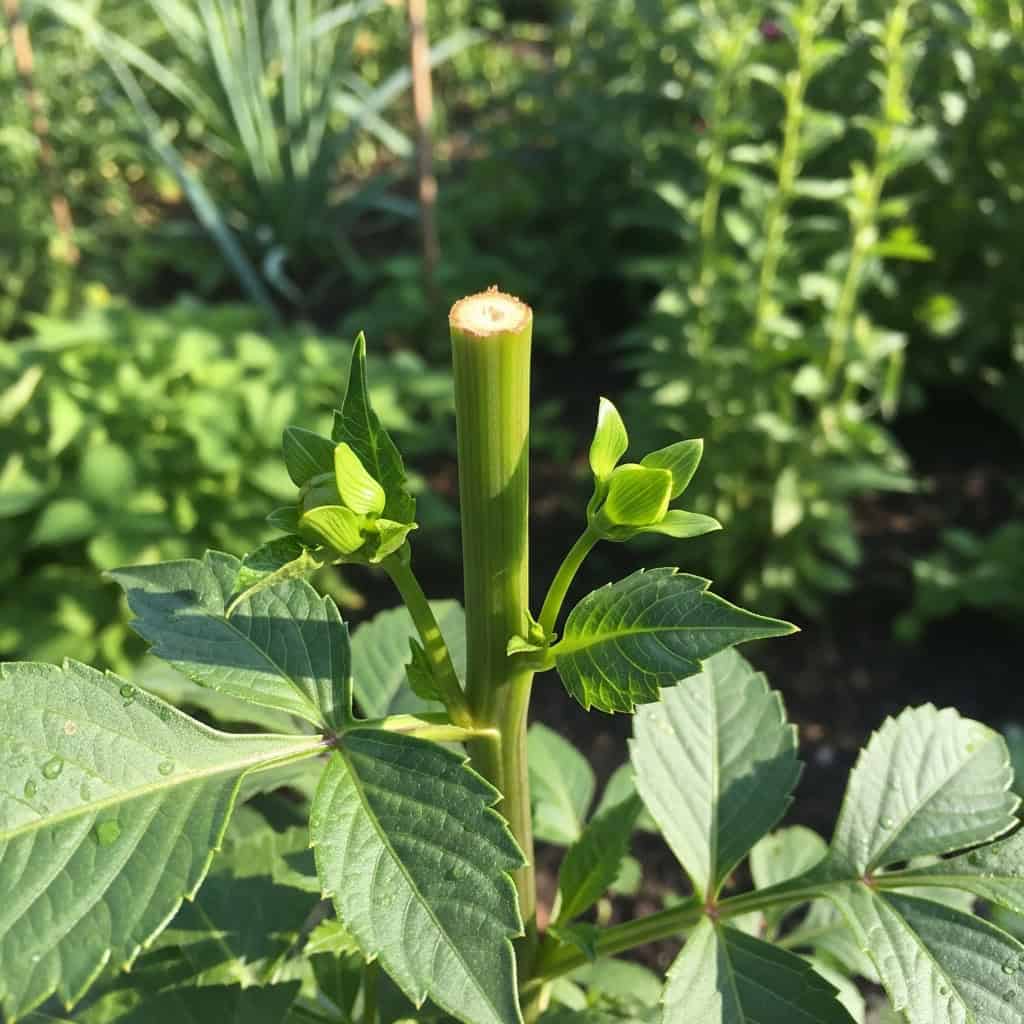
Snipping the main stem early helps plants grow bushier and produce more flowers. This simple step boosts blooms, making your dahlias even more stunning!
Pinch off the top of the main stem
Pinch the top of the main stem once dahlias reach 6–8 inches tall. Do this above a set of leaves to shape the plant and boost flower production. This signals the dahlia to grow extra stems, leading to more blooms.
Pinching at 12–16 inches also works if there are three to five sets of leaves on the plant. Find the center stem between the top leaves and pinch it off gently. With proper care, these steps can give you 5–10 times more flowers than unpinched plants.
Secure your blooms with staking as they grow taller!
Conclusion
Growing dahlias can be easy and rewarding. With the right care, they will bloom beautifully. Focus on sunlight, watering, and proper support. Feed them well and give a little pinch for more flowers.
Enjoy a garden full of stunning blooms!
FAQs
1. What are the best conditions for growing dahlias?
Dahlias thrive in full sun and well-drained soil rich in organic matter like compost or peat moss. Proper soil preparation is key for healthy plants.
2. How do I plant dahlia tubers?
Plant dahlia tubers 4-6 inches deep with the eye facing up. Add bone meal to the hole for phosphorus, which helps strong roots form.
3. Why should I use wooden stakes when planting dahlias?
Wooden stakes support tall varieties and prevent stems from breaking during growth or windy weather. Staking dahlias early avoids damaging their roots later.
4. How often should I water my dahlias?
Deep watering once or twice a week works best, especially during dry periods. Avoid overwatering as it can rot the tubers.
5. Can I grow more dahlias from cuttings or clones?
Yes, you can take cuttings from sprouted dahlia tubers to create clones of your favorite varieties! This method ensures identical flowers each season.


